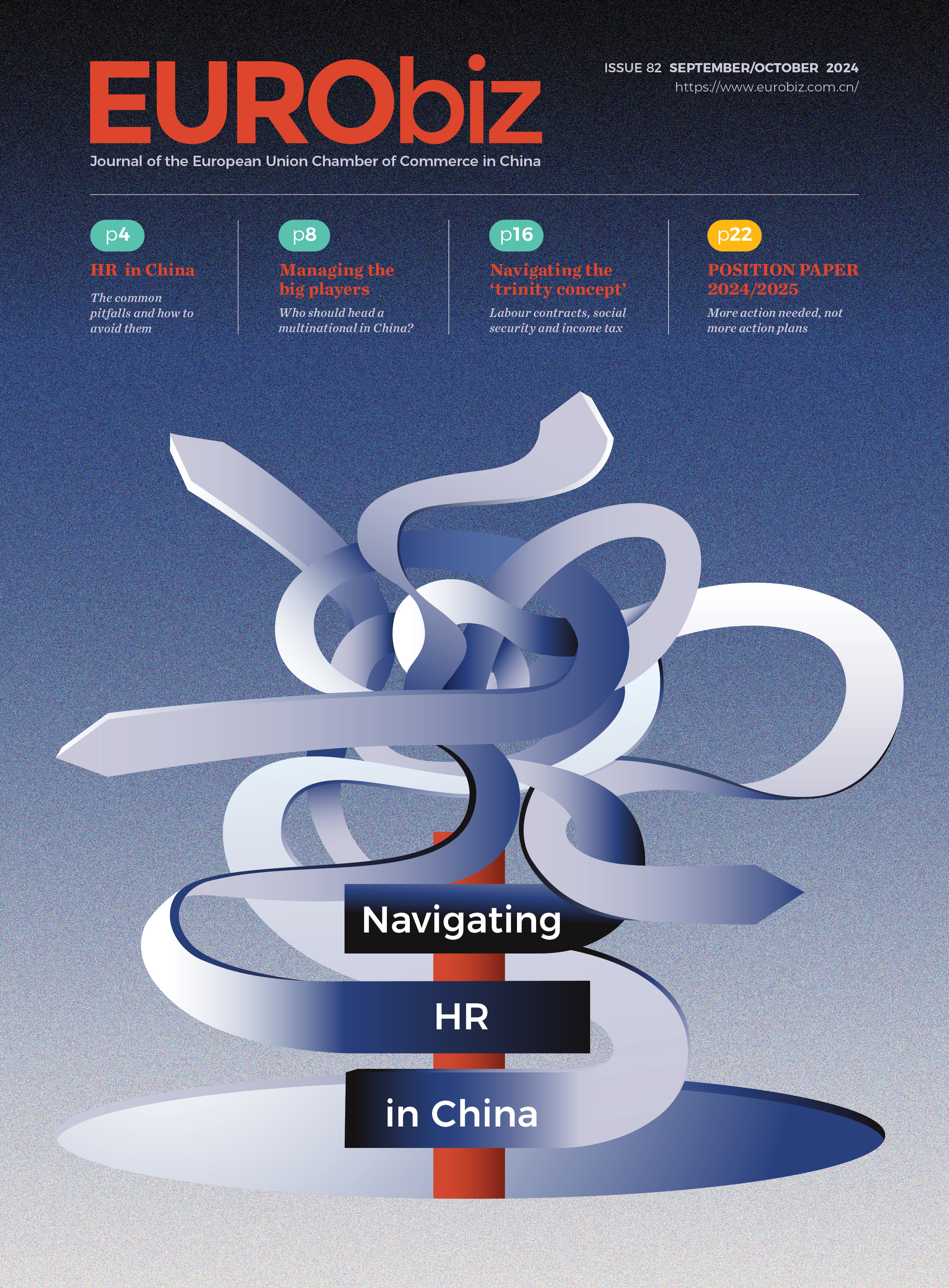
Culture still matters in online teamwork
For millions of people around the globe, virtual workspaces have provided a safe and productive refuge from the surreal circumstances of the COVID-19 pandemic. Remote work allows isolation from infection hazards of the daily commute, like subway cars and door handles, as well as colleagues exhaling who-knows-what in offices and meeting rooms. Digital channels transfer information while stopping people and viruses: an ideal combination. After the initial shock over the sudden change, many companies wondered why the digital transition had taken so long. Technology, they realised, saves time and money, and focusses attention on what really matters. But, as Gabor Holch from Campanile Management Consulting points out, there are reasons why it took a global cataclysm to make businesses run for digital shelter.
While seemingly sterile, orderly and efficient, technological solutions fail to keep out one pervasive bug in human interaction: conflicts between different workstyles. Conference apps and artificial intelligence (AI) solutions are culturally just as neutral as a Cadillac parked beside a Lexus. Humans transfer their traditions, beliefs and even personality onto the technology they create.
Meanwhile, the traumatic switch to remote working that resulted from the pandemic has put people under pressure, and amplifies both differences and conflict. When forced out of their comfort zones, people argue, snap or withdraw in virtual offices just as much as in brick-and-mortar ones.
Most companies try to remedy the situation by standardising tools and behaviours. But these still include hidden biases with the potential to undermine not only motivation, but also productivity. Teamwork thrives on the synthesis of diverse opinions and talent the way our physical health requires balance between activity and rest, hot and cold, stimulus and introspection. Going virtual can be credited with saving lives in recent months but, like most life-saving emergency shelters, it comes with certain limitations and risks. Managers of newly virtual teams must be aware of those factors in order to keep their people healthy, productive, and yes, happy.
Many managers are reluctant to touch the cultural side of technology, hoping that virtual reality rescues them from bothering with human nature. No more bouncing among impatient fellow commuters. Adieu, interruptions by colleagues with random questions. If Sir Ken Robinson was right about managers only using their bodies to get their head to meetings, telecommuting is the next logical step to conclude that equation. But as one business function after another goes online, many managers realise penetrating virtual technology also requires deeper knowledge of people’s behaviours in this new dimension of interaction. Here are a few unavoidable cultural aspects of technology that managers should take note of and try to engage with.
Age
That virtual convenience is inversely proportional with age is no secret, but we often overlook the significance of that fact for organisations. Problems go far beyond seniors being slow to catch up with new technology. Generations also differ in terms of personal values like privacy and detail orientation. When cherished principles are consistently violated, as they often are in speedy virtual teams, the brain’s alarm centres activate, and people start avoiding stressful situations. That is easier to do in a virtual workplace than in physical spaces. Organisations can soon find themselves split along age lines; millennials collaborate online, Gen-X and above hold landline-based conference calls or one-on-ones. The different approaches can interrupt information flow and teamwork exactly at a time when pulling together could rescue the company.
Practical tip: Find tech-savvy senior managers and tech-cautious youth, and appoint them to coordinate meetings and collaboration. Initiate cross-generational peer coaching in both the technological and intuitive aspects of virtual teamwork.
Tradition
This is what we often call ‘culture’, and expect it to vanish when we go online. But traditions shape trust and cooperation even in their absence. Researchers found that the lack of non-verbal greetings like bows and handshakes weakens trust at virtual meetings. When discussions take place without some team members, Asians tend to follow decisions made in their absence, while Europeans often demand renegotiation. Technology itself includes cultural biases. Experts noticed that the AI of Asian self-driving cars is more protective of the elderly, while western AI prioritises the safety of children.[1] In telecommuting, similar biases include different privacy settings between apps, or the fact that American conference software automatically tunes cameras and microphones to the loudest participant. When firms use advanced AI for complex tasks like hiring, the resulting distortion can be considerable.
Practical tip: Find and appoint collaboration team leaders who are familiar with the diverse cultures represented in the team, and relatively comfortable with technology. This may be a great opportunity for younger colleagues from minority backgrounds.
Personality
“I am coming from a meeting that should have been an email,” said the favourite T-shirt of my computer technician at the United Nations. Managers often ignore how unfair virtual work can be to different personality styles. Introverts excel at minute work (including Excel) but hate online discussions. Extroverts suffer from the isolation of telecommuting and crave attention at virtual meetings, but activity does not guarantee productivity. In teamwork, leaders must make introverts speak up, and often need to convince extroverts to shut up. In project work, leaders must maintain a balance between focussing on results and nurturing trust within and between teams.
Practical tip: The framework for virtual teamwork that engages all personalities is a quarter preparation, a quarter teleconferencing and half follow-up. Leaders must decline extroverts when they volunteer to chair meetings, and find coordinators who balance discussion with clear tasks.
Gender
This is the most obvious and yet the most profound source of diversity, certainly the most sensitive, and one that somehow followed us into 21st century cyberspace. Half of the world is online, says a recent report by the remote work app creator Zapier, but more men use the internet than women.[2] The pay gap between genders is smaller online, but still remains. Men at large firms find it easier to negotiate partial or full telecommuting deals than women. When COVID-19 disrupted our lives, it disproportionately challenged mothers with grounded children, including single mothers. If you wonder why that is the case, here’s a hint: the technological solutions we use overwhelmingly come from places that struggle with gender equality issues themselves, including countries like the United States and China, Silicon Valley firms, conglomerates like Microsoft and ambitious rivals who demand antisocial 9-9-6 work weeks.
Practical tip: Follow the example of airlines and police forces in progressive countries, and put female-male pairs or task forces in charge of virtual technology decisions. Consider gender issues a business risk and manage them accordingly: identify, prevent and mitigate.
As we learn to live with a prolonged COVID-19 crisis, this is a good time to think, discuss and plan. Emergencies suspend normalcy and consequently push trust, teamwork, engagement, motivation and other ‘soft issues’ to the back seat. That is justified for a while: security guards do not say “please” when the building is on fire. But telecommuting and virtual collaboration looks like it will stay, even in industries where it was previously unthinkable. If that is true, clenching our teeth and grabbing the mouse will not be enough; managers must find ways to engage people in their entirety in this two-dimensional workspace. Only then can we build a great post-COVID-19 world, something we are all itching to do regardless of age, background, personality or gender.
Gabor Holch is an intercultural leadership consultant, coach and speaker working with executives at Asian and European branches of major multinationals. His Shanghai-based team, Campanile Management Consulting, has served 100+ clients in 30+ countries since 2005. An expat since age four, China-based for 18 years and working globally, Gabor is a Certified Management Consultant (CMC) in English and Mandarin, certified consultant at the management academies of half a dozen global corporations and licensed in major assessment tools including DISC, the Predictive Index and MBTI.
[1] https://qz.com/1447109/how-east-and-west-differ-on-whom-a-self-driving-car-should-save/
[2] https://zapier.com/blog/remote-work-report-by-zapier/


Recent Comments